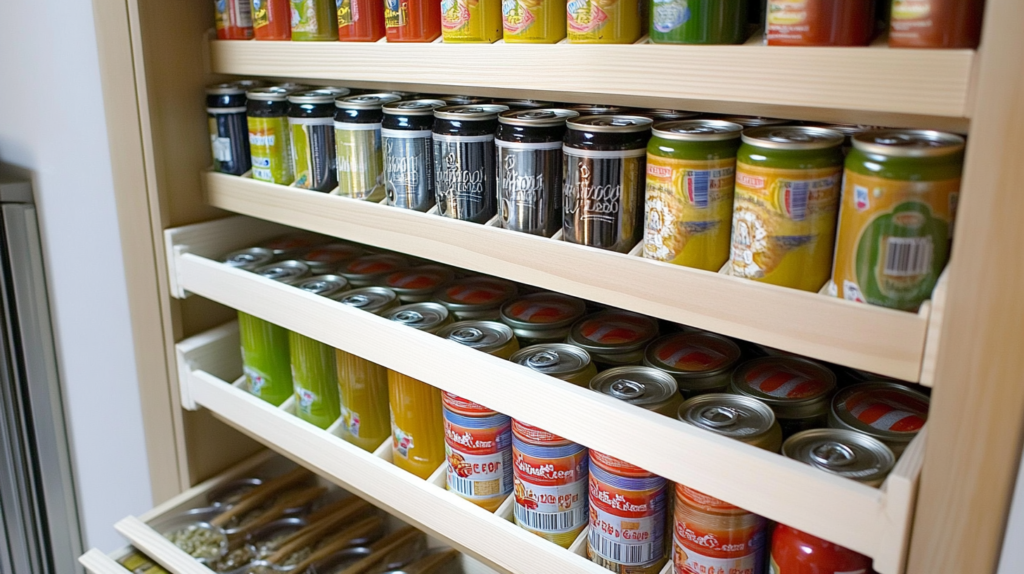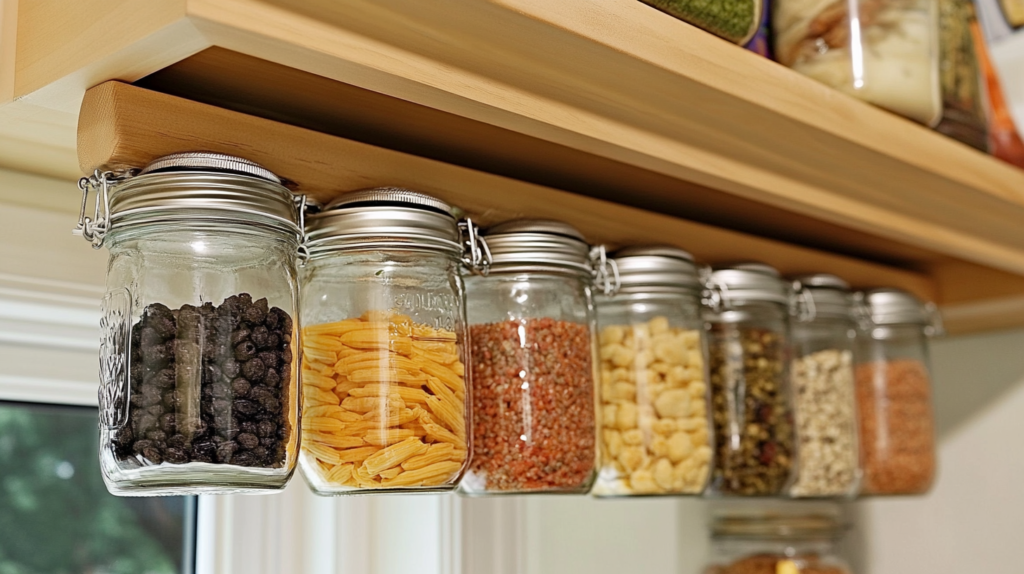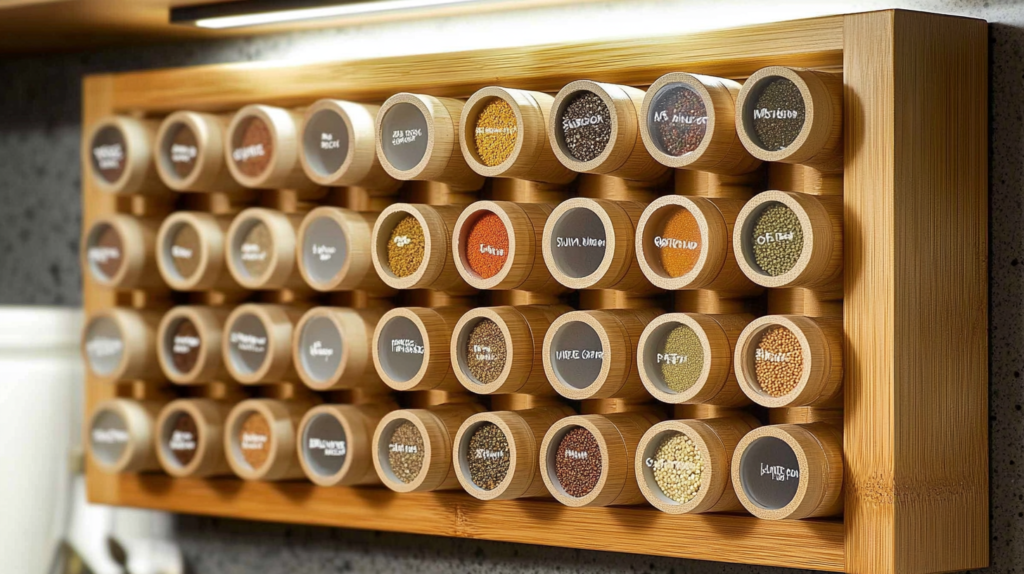That dusty old attic above your head? It’s a goldmine waiting to be tapped. With a little elbow grease and some smart planning, you can transform that forgotten space into a prepper’s paradise. I’ve spent years perfecting my own attic storage system, and I’m here to share the fruits of my labor. These 15 DIY projects will help you maximize every nook and cranny, creating a food storage haven that’ll keep you and your family fed through thick and thin. So grab your tools and let’s get to work – your future self will thank you.
Install Sturdy Shelving

The backbone of any good storage system is solid shelving. Build custom shelves using 2x4s and plywood to fit the odd angles of your attic. Make sure to anchor them securely to the joists – each shelf should be able to hold at least 100 pounds per linear foot. Space shelves about 18 inches apart to accommodate various container sizes. Paint or seal the wood to prevent splinters and make cleaning easier. Consider adding a lip to the front edge of each shelf to prevent items from sliding off during earthquakes or accidental bumps.
Create a Can Rotation System

Build a first-in, first-out (FIFO) can rotation system using PVC pipes. Cut pipes to length and secure them at a slight angle on your shelves. Cans roll in at the top and out at the bottom, ensuring you always use the oldest cans first. A 4-foot section of 4-inch PVC pipe can hold about 20-25 standard cans. Label each tube clearly for easy identification. For even better organization, color-code your pipes based on food categories (e.g., red for tomato products, green for vegetables).
Build a Root Cellar Box

Construct a insulated box to create a cool, dark environment for root vegetables. Use 2-inch foam insulation between plywood walls, and add a hinged lid with a good seal. Drill small ventilation holes and cover with fine mesh to prevent pests. This DIY root cellar can keep potatoes, onions, and other root veggies fresh for months. Size it to fit your space and needs – a 3x3x2 foot box can hold about 100 pounds of produce. Add a layer of sand or sawdust to the bottom of the box to help regulate moisture and prevent spoilage.
Install a Pulley System

Make it easier to move heavy items up and down from your attic by installing a simple pulley system. Mount a sturdy eye bolt in a ceiling joist near the attic entrance. Use a heavy-duty pulley and rope rated for at least 300 pounds. This system can save your back and make it much easier to rotate your food storage. Remember to always use proper lifting techniques, even with a pulley. Install a safety catch or brake mechanism to prevent accidental drops and ensure safe operation.
Create Vertical Jar Storage

Maximize vertical space by building a jar storage system. Screw jar lids to the underside of shelves or rafters, then simply twist the jars into place. This works great for mason jars filled with dry goods or home-canned produce. One square foot can hold up to 12 quart-sized jars. Make sure to use bands and new lids for a secure hold. Test the weight capacity of your setup by gradually adding filled jars and monitoring for any signs of stress on the structure.
Build a Grain Bin System

Construct a gravity-fed grain bin system using food-grade 5-gallon buckets and gamma seal lids. Stack buckets in a custom-built frame, with holes cut in the bottom of the upper buckets to allow grain to flow into the ones below. This system makes it easy to access and rotate large quantities of grains. A 6-foot tall, 3-bucket wide system can store over 400 pounds of grain. Add small windows to the front of each bucket to easily monitor grain levels without opening the lids.
Install a Dehumidifier

Keep your food storage safe from moisture by installing a dehumidifier. Choose an Energy Star rated model to keep electricity costs down. Aim to maintain humidity levels between 30-50% in your attic. Install a drain hose to direct water out of the attic, or place the dehumidifier on a sturdy shelf above a large bucket for easy emptying. Consider adding a hygrometer to monitor humidity levels and ensure your dehumidifier is working effectively.
Create a Spice Organization System

Build a spice organizer using small PVC pipes or wooden dowels. Cut them to 6-inch lengths and mount them vertically on a board. Each tube can hold a standard spice bottle. Label the ends of the tubes for easy identification. This compact system can store up to 50 spices in just 2 square feet of wall space. Add a small LED light strip above the organizer to easily read labels and find spices in low-light conditions.
Install Solar-Powered Lighting

Illuminate your attic storage area with solar-powered LED lights. Mount a small solar panel on the roof or in a south-facing window. Run low-voltage wiring to strategically placed LED strips or puck lights. This provides free, reliable lighting without increasing your energy bills. A 50-watt solar panel can power up to 500 lumens of LED lighting, plenty for most attic spaces. Include a battery backup system to ensure lighting even during extended periods of cloudy weather.
Build Rolling Storage Carts

Construct rolling carts to make the most of floor space and improve accessibility. Use sturdy casters rated for at least 100 pounds each. Build the carts to fit between roof trusses or shelving units. These carts are perfect for storing heavier items or things you access frequently. A 2×3 foot cart can hold up to 400 pounds of food storage. Add locking mechanisms to the casters to prevent unwanted movement on uneven attic floors.
Create a Temperature Monitoring System

Keep tabs on your attic’s climate with a DIY temperature monitoring system. Use a Raspberry Pi or Arduino board with temperature and humidity sensors. Program it to send alerts to your phone if conditions exceed safe limits for food storage. This system can be built for under $50 and provides peace of mind for your valuable food stores. Expand the system to include multiple sensors placed throughout your attic to identify and address any hot spots or areas of concern.
Install a Dumbwaiter

For easier transport of goods, install a simple dumbwaiter system. Use a sturdy box, pulley system, and counterweight. This can be manually operated or motorized for larger loads. A basic 2x2x3 foot dumbwaiter can carry up to 100 pounds of supplies. Always include a braking system for safety. Install limit switches at the top and bottom of the dumbwaiter’s travel to prevent over-extension and potential accidents.
Build Vacuum-Sealing Station

Create a dedicated space for vacuum-sealing foods. Build a countertop with storage underneath for your vacuum sealer, bags, and other supplies. Include a pegboard wall for hanging tools and accessories. This station will streamline your food preservation process. A 3-foot wide counter provides ample working space for most vacuum sealers. Add a small freezer nearby to pre-freeze moist foods before vacuum sealing, which can significantly extend their shelf life.
Install a Ventilation System

Proper airflow is crucial for long-term food storage. Install soffit and ridge vents if your attic doesn’t already have them. For extra air circulation, add a solar-powered attic fan. This can help regulate temperature and prevent moisture buildup. A 30-watt solar attic fan can effectively ventilate up to 2,500 square feet of attic space. Consider installing a thermostat-controlled fan to automatically regulate attic temperature and save energy during cooler months.
Create an Inventory Management System

Develop a system to track your food storage inventory. Build a large dry-erase board or chalkboard to list items, quantities, and expiration dates. Alternatively, create a digital system using a tablet mounted on the wall, synced to a spreadsheet. Update your inventory regularly to ensure you’re rotating stock properly. A good inventory system can help you manage hundreds of items efficiently. Implement a barcode or QR code system for quick and accurate updating of your inventory as you add or use items.

